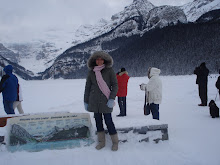
“Modern Times” is a very good movie, where the great Charles Chaplin made an excellent critic about the problems lived by workers in those times. Chaplin wrote, directed and starred the movie. He did an awesome job. Moreover, he could express and portrait ,in a magnificent way, all the consequences that modernization broth. For example, stress, hard-work, poorness, injustice and big social changes.
Charles Chaplin represents a man of the working class, who works in a factory with large and new machines. He suffers terrible consequences because of the hard-work he has to do. This situation make him feel so stressful and depress, that he drop out work. Here is when he decides to go to the doctor, who tell him to be the calm and relax, but how could he be relax if people of his town are living a terrible period. This process was well known by the Great Depression. This was an ideological system of work that was focus more in productivity than in the workers needs. The consequences of this situation were terrible, because people never thought that this would bring economical and social problems.

The film is a good way to realize how modernization worked in those times. Besides, it gives you a vision of the bad conditions that workers had to face to continue working and don’t lose their jobs. The movie has a lot of shots, which express the difficult moment that people had to live. But, even this events are very terrible and sad, the hilarious Charles Chaplin could catch and represent them in a funny and interesting way. Modern time is a silent movie, even tough you can understand everything very clear.

Charles Chaplin masterpiece, is a good and meaningful movie to watch. I recommend this film to everybody who wants to learn and understand in a better way The industrial Revolution period. It shows all the problems that workers had to deal with and how, in way, the power of love is involved there. You would also see, the consequences that technology has in that period, and how some of that chain problems have continued in our times.
I was very delight watching the movie, and I really recommend it. It’s amazing how Charles shows the positive side of life, because, even he was living a difficult time he never gave up. He continues doing what he though was correct. Apart of learn a lot about industrialization you would enjoy the great performance of Charles Chaplin and the co-star Paulette Goddard. They create a nice atmosphere meanwhile they are acting. Personally, I think that both show how important is to have a clear view of what you want for life, and obviously fight for that, no matter what the consequences will bring. You should see the movie and prove that all what I said is true, and at the end you would have a similar view, or maybe a different one. It depends on the perspective that you’ll watch it.





















